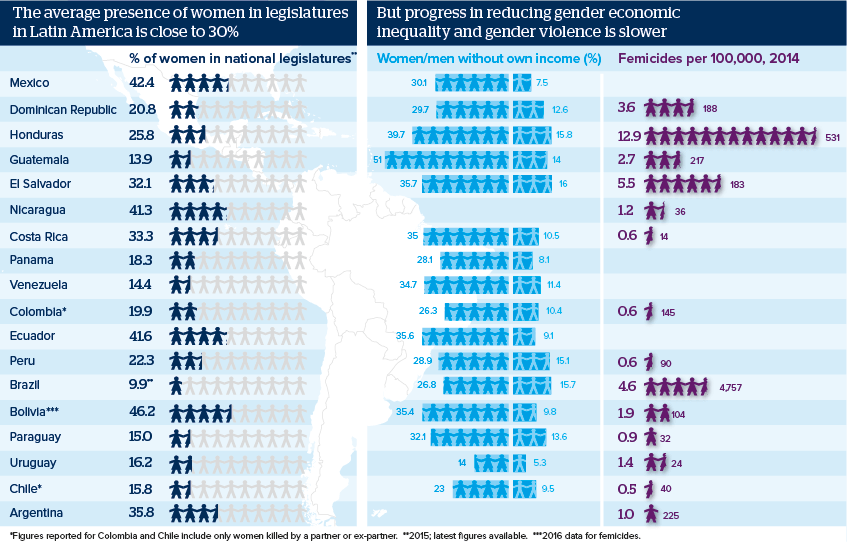Gender issues run deep in Latin America
Women’s political representation has increased in Latin America, but inequality and gender violence persist
Source: ECLAC, IPEA, Bolivian Attorney General’s Office, Oxford Analytica
Outlook
With several female heads of state in Central and South America in recent years, and legislation to ensure a minimum of women candidates for Congress, gender inequality in high-level politics has looked set to diminish.
Yet other statistics are less encouraging. According to the UN Economic Commission for Latin America and the Caribbean, in 2014 there were 118.2 women living in poverty for every 100.0 men -- up from 107.1 in 2002. Among the indigent, there are 121.5 women for every 100.0 men.
Honduras, with one of the world’s highest homicide rates, also has the highest rate of femicides in the region, at 12.9 per 100,000 (531 in absolute terms). Although much lower per 100,000, Brazil, Argentina and Colombia have the largest absolute numbers of reported femicides in South America; the latter two show the highest number of women killed by their partner or former partner.
Impacts
- Increasing protests over gender violence across the region suggest that the issue is gaining political salience.
- High percentages of women without their own income or in low productivity jobs will hinder progress in gender inequality.
- The Latin American Development Bank says greater political and economic inclusion for women could boost regional growth by 34%.
- Gender inequality appears increasingly linked to socioeconomic level, despite increasing education for women.
See also
- Pandemic will worsen Latin America's gender inequality - Mar 22, 2021
- Gender equality remains a distant prospect in Chile - Mar 23, 2020
- Latin America gender divide persists - Feb 4, 2020
- Gender equality is a distant but achievable goal - Sep 19, 2019
- Gender equality will not come quickly in Chile - Jun 28, 2018
- Argentine abortion bill may pass but carries costs - Jun 18, 2018
- Latin America's management gender parity will be slow - May 31, 2018
- Gender inequality is an indicator of conflict risk - Jan 4, 2018
- Adding women in peace talks can improve outcomes - Oct 23, 2017
- Gender crime ups Mexico and Central America migration - May 16, 2017
- Rightist religious political opposition grows in Peru - Mar 13, 2017
- Gender violence protests will mount in Latin America - Nov 4, 2016
- More graphic analysis
